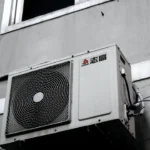Proper truck cleaning routines reduce wear and tear, prevent costly repairs, and maintain both safety standards and operational efficiency.
For anyone who spends long hours on the road, a clean truck isn’t just about appearances. It’s about performance, safety, and longevity. Regular maintenance helps prevent corrosion, reduces wear and tear, and maintains a professional image on every route.
Whether you’re managing a commercial fleet or driving your own rig, developing a consistent cleaning routine is one of the smartest investments you can make in your vehicle’s upkeep. It’s not just about soap and water. It’s about protecting your truck from the harsh conditions it faces daily.
Let’s find out more in this article.
Why Regular Truck Cleaning Matters
Trucks are exposed to a lot more than passenger cars. From road salt and grime to oil residue and insect buildup, every trip leaves behind substances that can damage paint, metal, and mechanical components over time.
Skipping regular cleaning can cause rust and corrosion on your vehicle’s body and parts. Dirt on mirrors, windows, and headlights can make it harder to see, while debris can block the radiator and cause overheating. A dirty vehicle can also leave a bad impression on clients or inspectors.
Regular cleaning doesn’t just preserve appearance. It ensures operational efficiency and safety. A clean truck is easier to inspect, more aerodynamic, and reflects pride in ownership or company standards.
Step 1: Gather the Right Equipment
The foundation of any proper truck cleaning process is having the right tools. High-quality cleaning products protect your truck’s surfaces while delivering professional results.
Here’s what you’ll need:
- Pressure washer
- Soft-bristle brushes
- Microfiber cloths
- Degreaser
- Truck-safe detergent
- Wheel cleaner
- Tire shine
- Wax or sealant
To simplify the process, you can explore complete professional cleaning bundles like the truck cleaning kit. This is designed for full-service washing, polishing, and protection in one set.
Having all the right tools on hand means fewer shortcuts and better, longer-lasting results.
Step 2: Pre-Rinse to Remove Surface Dirt
Before applying any cleaning product, start with a thorough rinse. Use a pressure washer or hose to loosen mud, salt, and grime from the exterior. Begin from the roof and work your way down to ensure that dirt flows downward instead of redepositing on cleaned areas.
A strong pre-rinse removes the majority of debris and makes washing easier and safer for your truck’s paintwork.
Step 3: Apply Soap and Degreaser
Once your truck is rinsed, it’s time for the main wash. Use a high-quality truck detergent that’s pH-balanced and safe for painted surfaces.
Avoid household soaps. They can strip away wax and protective coatings.
Work in sections to prevent soap from drying out before rinsing. For heavily soiled areas like exhaust stacks, fuel tanks, and engine compartments, use a degreaser to break down oil and grime.
Step 4: Scrub and Detail Exterior Surfaces
After soaping, use soft brushes or wash mitts to gently scrub the truck’s surface. Focus on areas that accumulate dirt, such as door handles, mirrors, steps, and grilles.
For wheels and tires, use a dedicated wheel cleaner to remove brake dust and restore shine. Avoid using the same brush for wheels and painted surfaces to prevent cross-contamination.
Detailing exterior chrome, metal trim, and windows adds a professional finish. Using a polish or protective wax after washing helps prevent future buildup and maintains the paint’s gloss.
Step 5: Clean the Undercarriage
The underside of your truck is constantly exposed to water, salt, and road debris-especially during winter months. Over time, this can lead to corrosion or rust that weakens structural integrity.
Rinse the undercarriage thoroughly with a pressure washer. For best results, use a dedicated undercarriage cleaner attachment to reach hard-to-access areas.
A quick spray of anti-corrosion protectant can go a long way in preserving the truck’s frame and components.
Step 6: Tackle the Cab Interior
A professional cleaning doesn’t stop at the exterior. The cab deserves attention, too.
Drivers spend countless hours inside. A clean interior contributes to comfort and focus.
Here’s an easy cleaning routine to follow. Start by vacuuming the seats, carpets, and floor mats. Wipe down the dashboard, steering wheel, and controls to remove dust.
Clean the windows and mirrors so you can see clearly. Lastly, disinfect door handles and other surfaces people touch often to keep your vehicle clean and safe.
Adding air fresheners or fabric protectants can help maintain a clean environment between washes.
Step 7: Maintain Glass and Mirrors
Crystal-clear visibility is vital for safety on the road. Use streak-free glass cleaner and microfiber cloths on all windows, mirrors, and light covers.
Inspect windshield wipers and replace them if they leave streaks or noise. Clean headlight and taillight lenses as well. Grime buildup can reduce light output and increase nighttime driving risks.
Step 8: Protect Your Truck’s Finish
After washing and drying, apply a wax or sealant to your truck’s painted surfaces. This protective layer helps repel dirt, UV rays, and water. This keeps your truck cleaner for longer.
Modern ceramic coatings can last several months and provide a glossy, showroom-quality finish. If you regularly drive in harsh weather, this extra protection can extend your truck’s lifespan significantly.
Step 9: Don’t Forget the Trailer
If you haul a trailer, make sure to clean it along with your truck. Trailers accumulate similar grime. Neglecting them can create drag or imbalance during travel.
Clean the trailer doors, roof, and undercarriage, and check for damage while you work. It’s a perfect time to spot small issues before they become costly repairs.
Additional Tips for Effective Truck Cleaning
Use microfiber towels, avoid washing in direct sunlight, inspect seals and gaskets, and keep cleaning supplies in your truck.
A few extra minutes after each trip can prevent hours of scrubbing later.
Final Thoughts
Thorough truck cleaning isn’t just about looking good. It’s about preserving your vehicle’s health and ensuring safety on every journey. From the engine bay to the cab, each area plays a role in keeping your truck in peak condition.
With the right products, tools, and techniques, you can achieve professional results without relying on expensive detailing services.
Regular cleaning isn’t a chore. It’s a habit that pays dividends in performance, pride, and long-term savings. When your truck looks good, it runs better, lasts longer, and represents the professionalism every driver values.
For more automotive maintenance tips, check out our blog posts.










